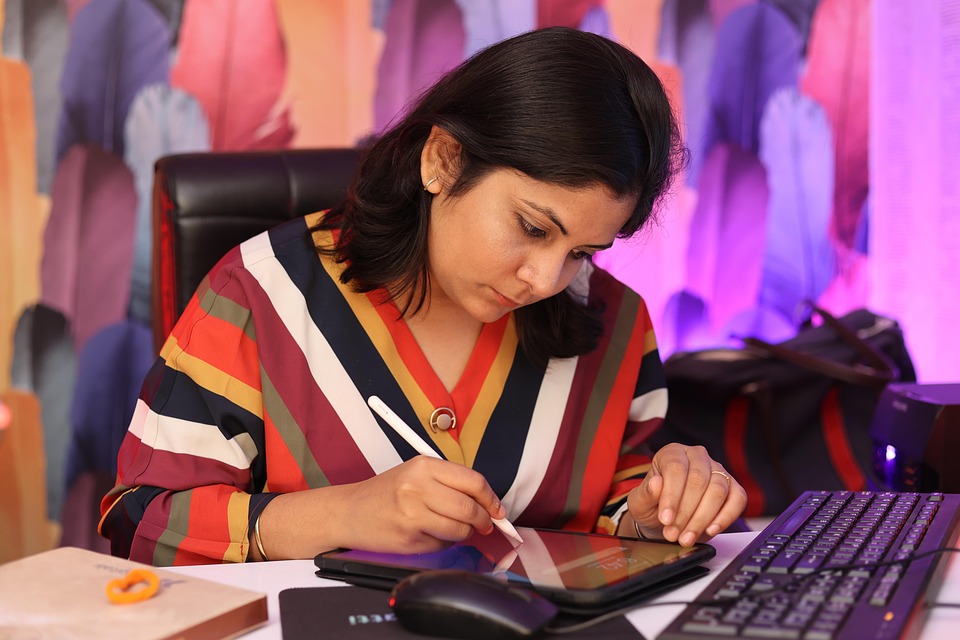Essential Skills and Responsibilities for Graphic Designers: A Shortage Occupation with Promising Career Prospects
In a world increasingly dominated by visual communication, the role of graphic designers has never been more critical. This career path, often underestimated, is not only a shortage occupation but also boasts promising prospects for those willing to invest their creativity and skills. Let’s delve into the essential competencies and responsibilities that define this dynamic profession.
1. Creative Proficiency and Technical Expertise
At the heart of graphic design lies an intricate blend of creativity and technical skills. Designers must possess an innate ability to conceptualise and articulate ideas visually. This means being well-versed in design principles, colour theory, typography, and layout techniques. Moreover, proficiency in industry-standard software such as Adobe Creative Suite (Photoshop, Illustrator, InDesign) is non-negotiable.
But what about the emerging technologies? As augmented reality (AR) and virtual reality (VR) gain traction, graphic designers are called upon to adapt and evolve. The ability to merge traditional design skills with these innovative technologies can set one apart in a crowded field.
2. Communication and Collaboration
Graphic designers operate at the intersection of art and business. This duality necessitates exceptional communication skills. It’s not merely about creating aesthetically pleasing visuals; designers must articulate their ideas clearly to clients, stakeholders, and team members. Effective collaboration is often a key ingredient in successfully bringing a project to fruition.
Take, for example, the words of renowned designer Paula Scher: “Design is thinking made visual.” This highlights the importance of understanding client needs, market trends, and audience expectations. Designers must ask the right questions and actively listen to feedback, ensuring that the final product resonates with its intended audience.
3. Time Management and Adaptability
In a fast-paced environment, time management emerges as a fundamental skill. Designers frequently juggle multiple projects with varying deadlines and priorities. The ability to organise one’s workload efficiently can often mean the difference between success and failure.
Adaptability, too, is critical. With design trends shifting rapidly, staying current requires a commitment to continuous learning. Whether it’s attending workshops, engaging in online courses, or simply keeping abreast of industry news, a proactive approach to professional development is essential.
4. Understanding of Branding and Marketing
A graphic designer’s role transcends mere aesthetics; it encompasses a deep understanding of branding and marketing strategies. Designers must grasp how visuals can convey a brand’s message and identity, influencing consumer perceptions and behaviours. As companies increasingly recognise the value of strong branding, designers equipped with this knowledge are particularly sought after.
Consider the shift in how brands communicate in the digital age. A cohesive visual identity across platforms—be it social media, websites, or print—is imperative. Thus, designers must be savvy about digital marketing trends, SEO principles, and user experience (UX) design. This adaptability ensures their work not only looks good but also functions effectively within the broader marketing framework.
The Future Awaits
The demand for skilled graphic designers is set to rise, particularly as businesses continue to prioritise visual content in their marketing strategies. The versatility of this profession opens doors to various industries, from advertising and publishing to tech and fashion.
As the landscape evolves, Visajob.co.uk remains committed to assisting you in navigating your career journey in the UK, especially for roles that require sponsorship. With the right skills and support, the world of graphic design can be a fulfilling and prosperous avenue to explore. Whether you’re just starting or looking to advance, the future is indeed bright for graphic designers.




